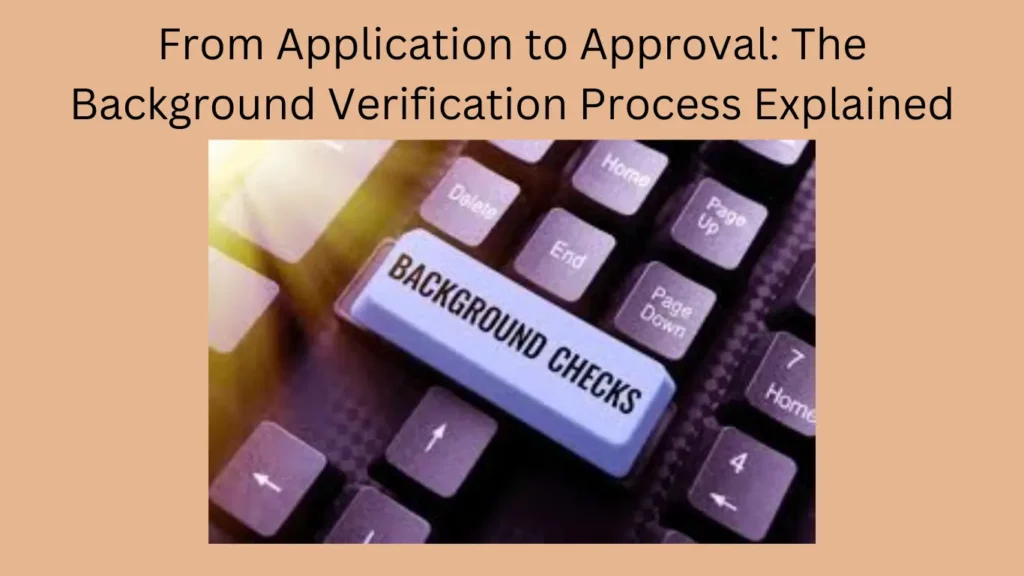Introduction
Background verification is a crucial step in the hiring process, ensuring that candidates are trustworthy and suitable for the role. This comprehensive guide will walk you through the entire background verification process, from application to approval, highlighting its importance, key steps, and best practices.
The Importance of Background Verification
Background verification helps organizations
- Ensure workplace safety by identifying individuals with a history of violence or criminal activity.
- Protect company assets by screening out candidates with a history of theft or fraud.
- Verify qualifications to ensure that candidates have the necessary education and experience.
- Comply with legal and regulatory requirements to avoid legal issues and maintain industry standards.
Steps in the Background Verification Process
1. Application Submission
This application typically includes a resume, cover letter, and any necessary personal information.
2. Consent for Background Check
Before conducting a background check, the employer must obtain the candidate’s written consent.
3. Initial Screening
During the initial screening, the employer verifies basic information provided by the candidate, such as contact details, education, and employment history.
4. Identity Verification
Identity verification involves confirming the candidate’s identity through government-issued documents like a passport, driver’s license, or social security number.
5. Criminal Record Check
This step helps in assessing whether the candidate poses any risk to the organization.
6. Employment History Verification
This step ensures that the candidate’s work experience matches their resume.
7. Education Verification
Education verification checks the authenticity of the candidate’s educational qualifications.
8. Credit History Check
For positions involving financial responsibility, a credit history check may be conducted. This step assesses the candidate’s financial stability and responsibility.
9. Reference Checks
Reference checks involve contacting individuals provided by the candidate to gain insights into their character, work ethic, and suitability for the role.
10. Social Media Screening
Some employers conduct social media screenings to gather additional information about the candidate’s behavior and interests outside of work.
11. Review and Decision
Once all the information is collected, the employer reviews the findings to make an informed hiring decision. Any discrepancies or concerns are addressed before final approval.
Best Practices for Background Verification
1. Maintain Transparency
Keep the candidate informed throughout the process. Transparency builds trust and ensures that the candidate understands the purpose and scope of the background check.
2. Ensure Legal Compliance
Comply with all relevant laws and regulations, such as the Fair Credit Reporting Act (FCRA) in the United States, to avoid legal issues and ensure ethical practices.
3. Protect Candidate Privacy
Handle all background check information confidentially and store it securely to protect the candidate’s privacy and comply with data protection regulations.
Conclusion
The background verification process is a vital component of the hiring process, ensuring that organizations hire trustworthy and qualified individuals. By understanding and implementing effective background verification practices, employers can make informed hiring decisions that enhance workplace safety, protect assets, and maintain compliance with legal and regulatory standards.
For further Inquires Contact Us
FAQs
1. What is the first step in the background verification process?
- The process begins with the candidate submitting their job application, which includes a resume and personal information.
2. Why is candidate consent important for background checks?
- Obtaining written consent is crucial for legal compliance and ensures transparency with the candidate.
3. What does employment history verification involve?
- It involves contacting previous employers to confirm job titles, responsibilities, and employment dates to ensure the candidate’s experience matches their resume.
4. How do employers verify a candidate’s education?
- Employers contact educational institutions to verify degrees, certifications, and attendance dates to confirm the authenticity of the candidate’s qualifications.
5. What should employers do with the information obtained from background checks?
- Employers should handle all information confidentially, store it securely, and ensure it is only accessible to authorized personnel to protect the candidate’s privacy.
